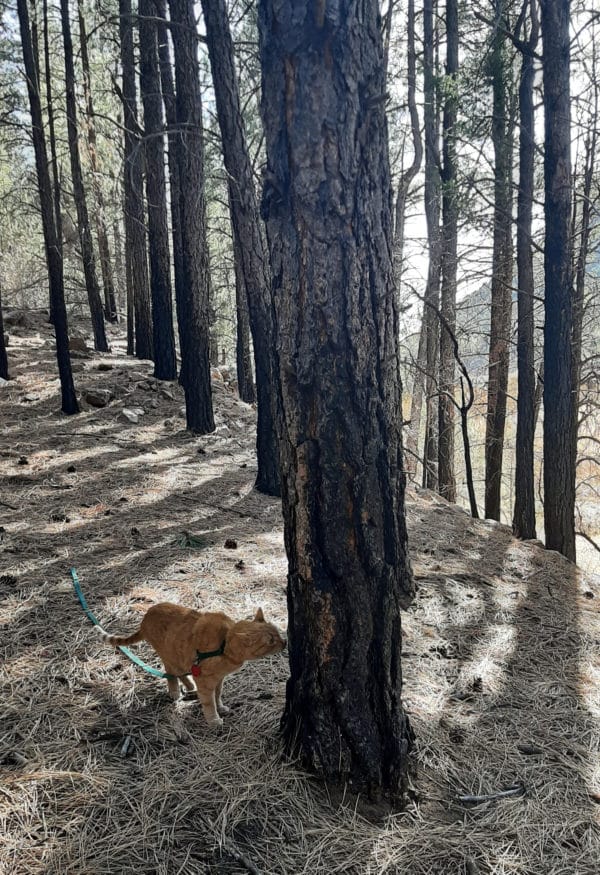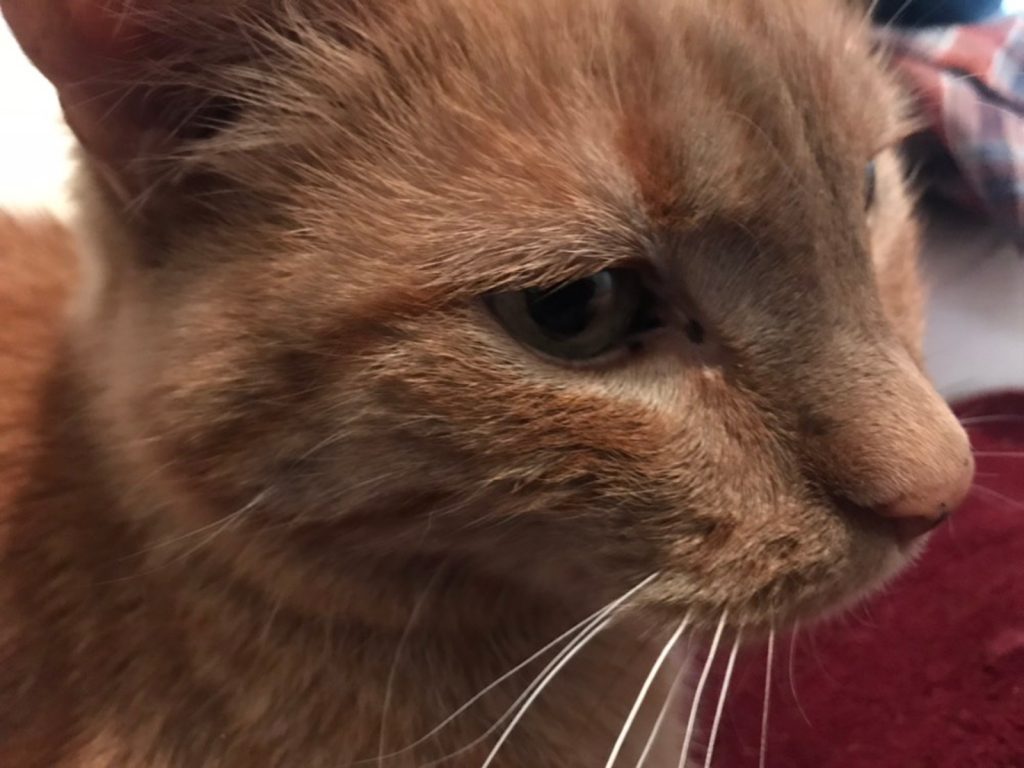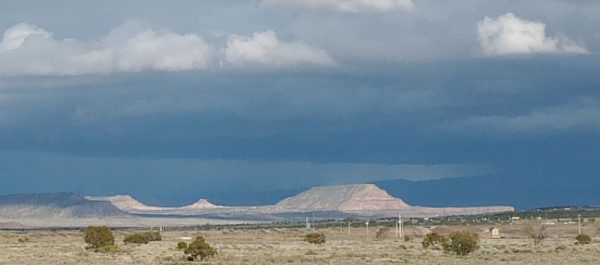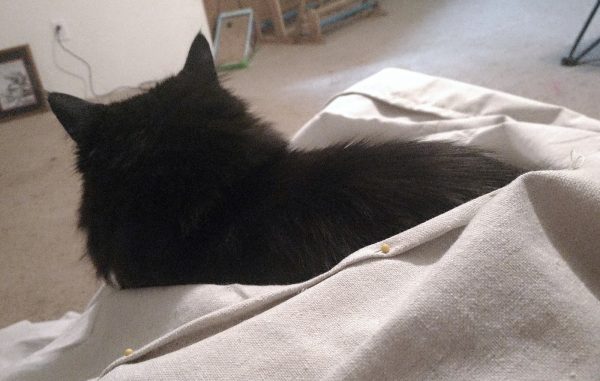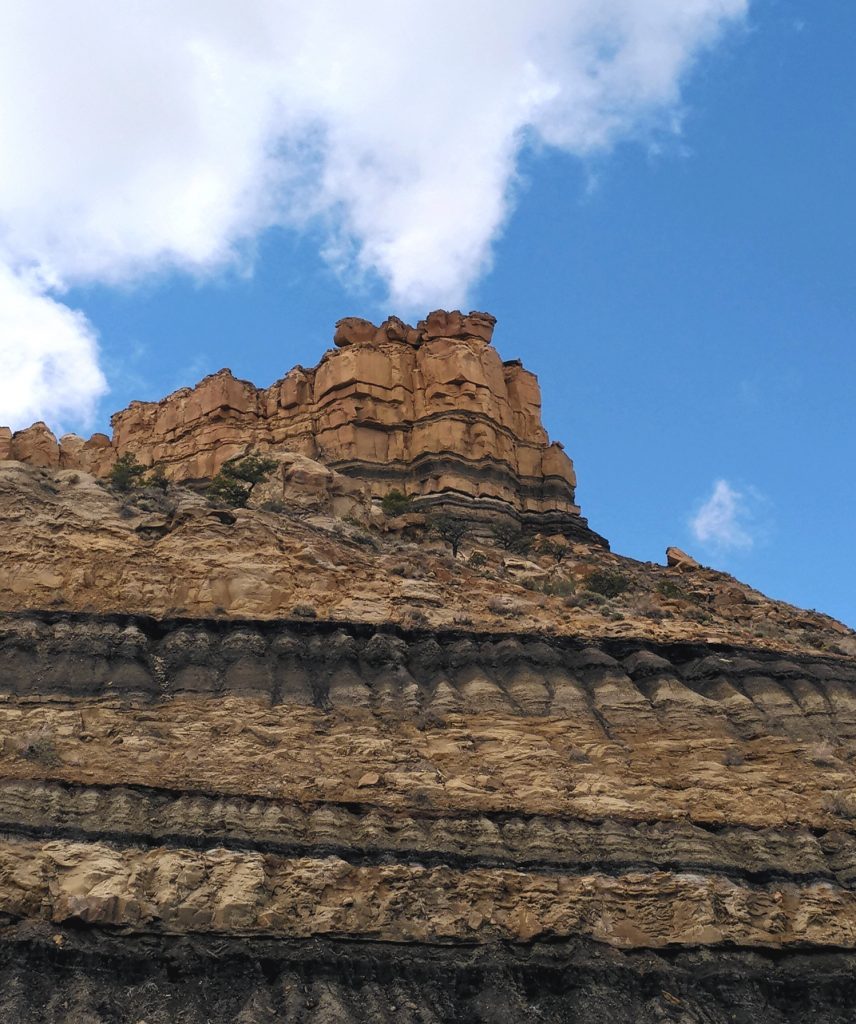[ Loiosh, an orange tabby wearing a green harness, is sniffing at the base of a Ponderosa pine. The bottom three feet or so of the bark is lightly charred. ]
Two days ago I FINALLY managed to do Woods Day. Y’all, I need to prioritize Woods Day more, because I needed that BAD. Spending a day outside working on Tyrava is good, mind you, but Woods Day is, apparently, more necessary.
I found us a new spot again — managed to find a bit of creek that had water in it! — & it turns out there’d been fire on the slope above. I didn’t see any signs of heavy equipment, so it must’ve burned out on its own. There was a whole glade of trees that had burned some but not much — the one in the picture above only lost a layer or two of bark, & is otherwise doing fine. This is why Ponderosa pines have that layered puzzle-piece bark!
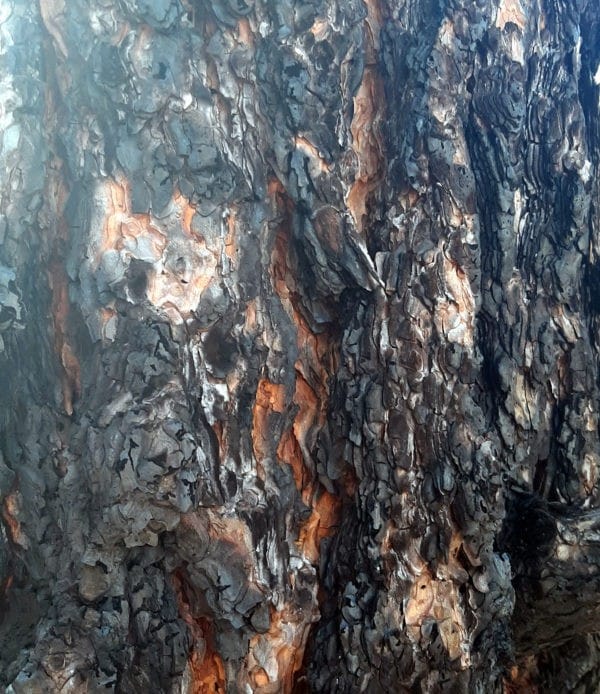
[ Closeup of the bark of a Ponderosa pine. The bark is split into thin layers — the outer layers are all burnt, but cracks show that the deeper layers are fine. Some of the deeper layers are a vibrant brown-orange. ]
Once Ponderosas get to a certain age, it turns out, they start developing really thick bark. This protects the tree against low-intensity fires, of the type that happen when a forest is left to its own devices, or is properly managed by indigenous people who know what they’re doing (or forestry services that actually LISTEN to indigenous people, which is, fortunately, starting to happen more often). Without these relatively frequent, small fires, too much undergrowth & stuff builds up, & you get the kinds of high-intensity, extremely destructive fires that have been happening in the western US over the last several decades.
This grove is a perfect example of how things are SUPPOSED to work. The fire cleared the underbrush, burned the layer of flammable fallen stuff on the ground, & killed the trees too small to survive. This in turn allows more light to reach the ground, reduces competition for the trees big enough to survive the expected smaller fires, & removes the fuel that would otherwise have caused a BIG fire that might’ve destroyed hundreds of acres of forest & also, not incidentally, possibly my house.
Some patches burnt more vigorously than others, of course.
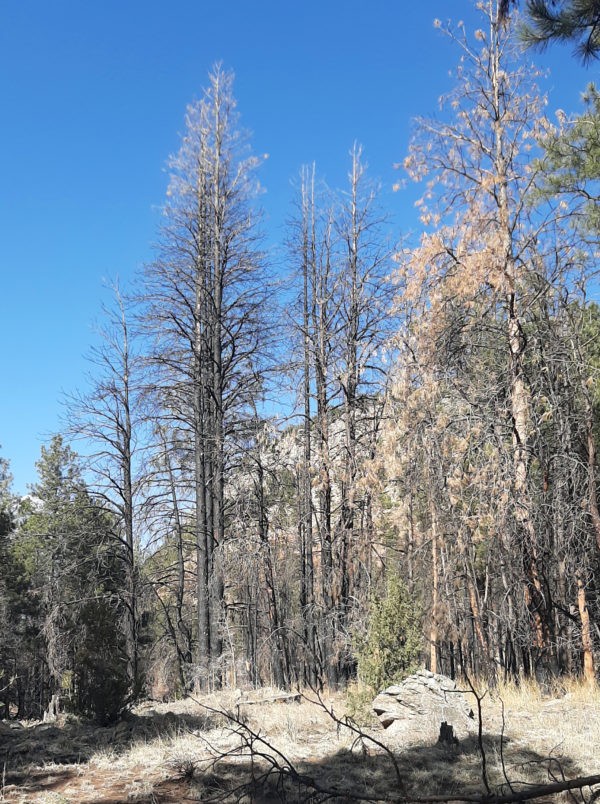
[ Burnt Ponderosa pines rise up on the far side of a small meadow. ]
I don’t know why this patch burned more than other spots but — there’s a valley just beyond those trees, so maybe the fire was hotter there because it was burning upwards?
ANYWAY one really cool thing about the burned Ponderosas was the resin. I usually don’t find more than tiny bits of Ponderosa resin — it’s why I don’t have it in the shop next to the piñon resin — but some of the trees that had burned but survived had BIG blorbs of resin.
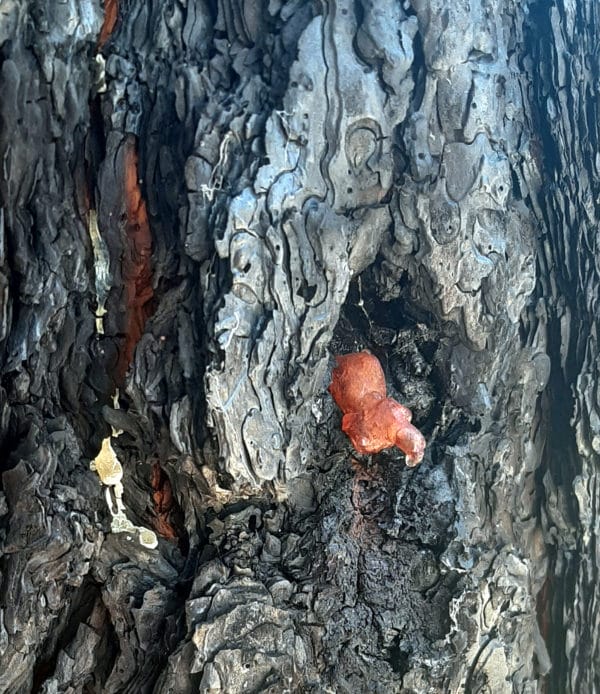
[ Closeup of Ponderosa bark. This bark is more thoroughly burned than the stuff in the other picture. There’s also a blob of amber-coloured resin, more than an inch long and half an inch across, emerging from the bark. ]
I harvested some, being even more careful than usual not to hurt the trees in the process; they’ve already been through enough. The resin is this amazing re-amber colour, & feels like a talisman of survival, of strength in the face of the wildfire.
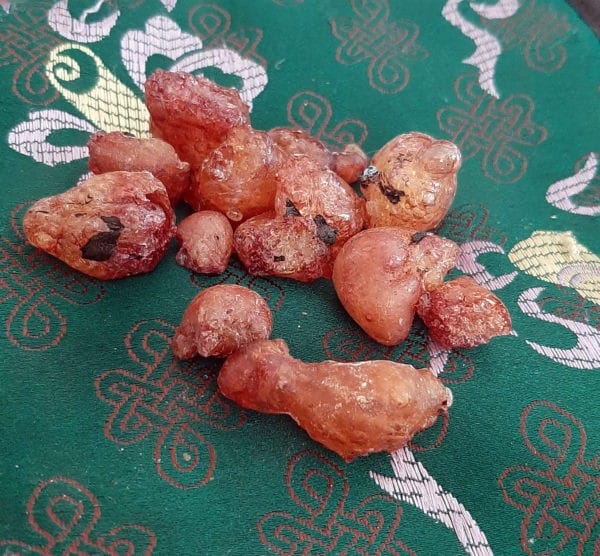
[ Several pieces of bright amber resin in a pile on a background of green fabric. ]
I don’t feel right putting it up for sale. I’m planning to keep some of it for myself, but if any of you feel the need for a bit of this for your own use, give me a holler, I’ll tuck some in the mail for ya.
